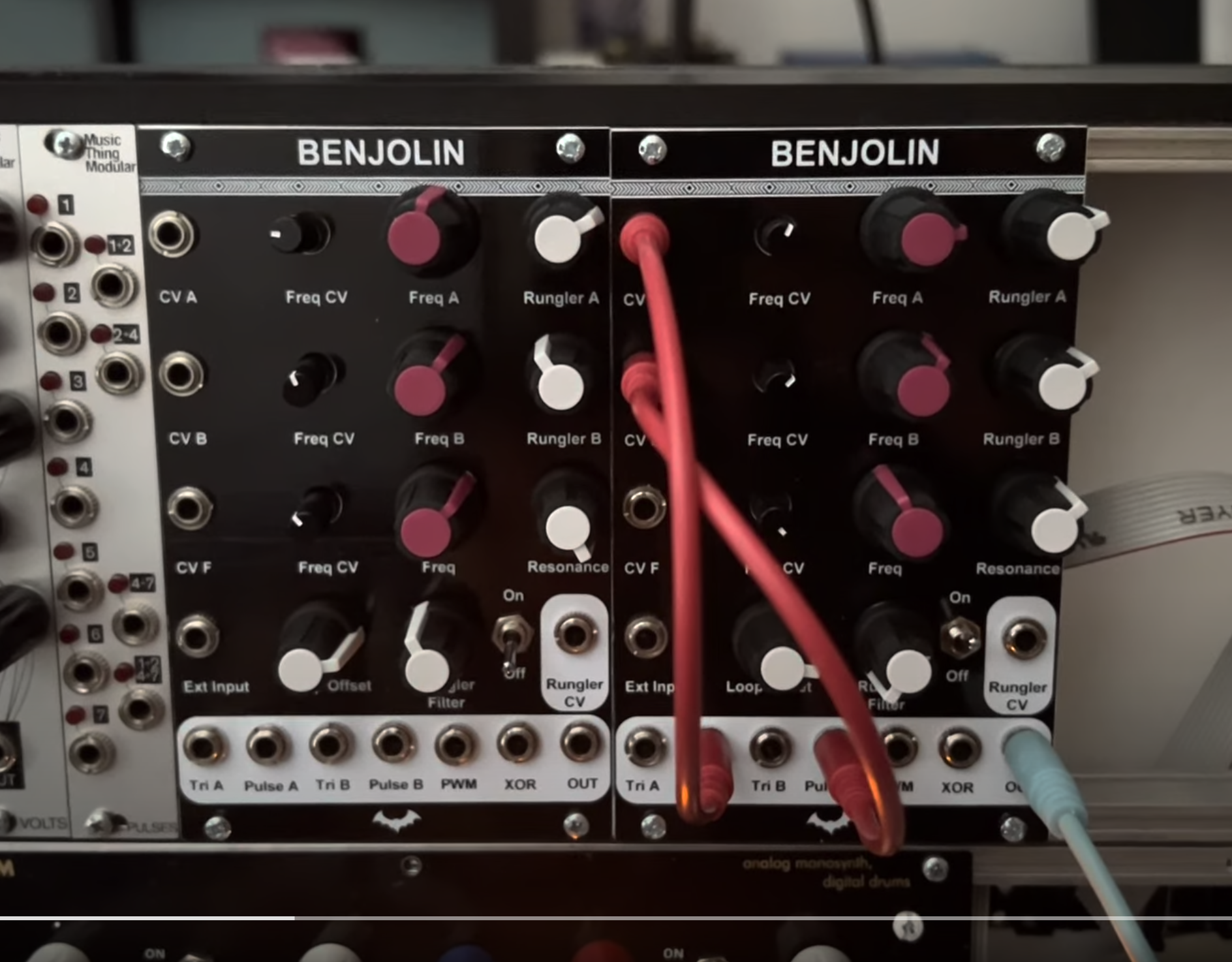As I’ve become more seasoned of a synth DIY’er, I wanted to tackle the Benjolin. Once in a while, groupbuys would pop-up with Rob Hordijk’s blessing, but I was never able to sign on to one quickly enough. Finally, upon finding forestcaver’s version on GitHub, I ordered PCB’s and faceplates from JLCPCB and bought the tiny passive parts from Tayda Electronics to start building. It was fairly inexpensive for how novel and interesting the instrument is.
Then my son was born, and the box of pieces sat on my desk for months. By the time I came around to tackling some projects (and having most things packed up due to lack of space and a perpetual house hunt), being a human pick-and-place was not an appealing task. I’ve built a few SMT modules by hand before, and while it’s not the hardest task, it’s definitely more effort than I wanted.
I decided to try a different approach: I uploaded the project to EasyADA, output the fab files, and ordered pre-populated boards from JLCPCB. I still had to solder pots, jacks, power bucks, and the SSI2164, but that took about 30-60 minutes per board. The cost for five of them, in total, was maybe 70% of what I’d pay for a single module from a proper module developer.
Since it was my first order like this, I was certain I missed something, and was flabbergasted when the first one sprung to life after construction! The other four followed suit - only the last one didn’t work right away, but reflowing the solder around one of the TL074’s did the trick.
My goal was to get a double Benjolin, and I ended up with three extras to give as gifts. The Mutable Instrument’s Sifam knobs are a nice touch as well, they really fit well in conjunction with the rest of my system, which is mostly Mutable Instruments and Make Noise Music.
It’s a fascinateing machine. At first touch, it feels almost too simple, even a little cobbled together. But the more I explore it, the more little nooks and crannies of behavior I find. It’s a lot like the Ciat-Lonbarde approach to things, where it’s difficult to tame and its chaos quickly infects any other module it’s connected to.
My only disappointment is the constant signal to the filter, and how instantly external signals can overdrive the filter - but folks on the Lines forum informed my that that’s in the original (non-Eurorack) design as well, and it’s just part of the instrument. That’s still a curious concept to me, it’s easy to sit in front of a wall of modules and think you’re playing with a single, unified instrument. But it’s a collection of instruments, which themselves are a collection of functionality, which are then made up of all these little comoponents and integrated circuits that function in their own very specific way. Like learning how to hear and feel how a reed vibrates or a string quivers under the bow, electronic instruments really do have their own whims and and quirks, especially when that functionality is exposed to the panel effectively.
